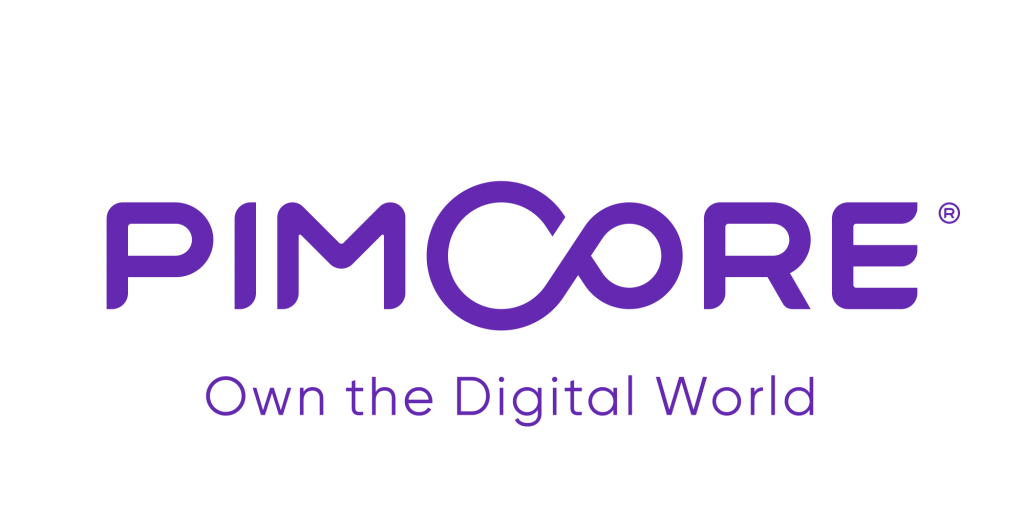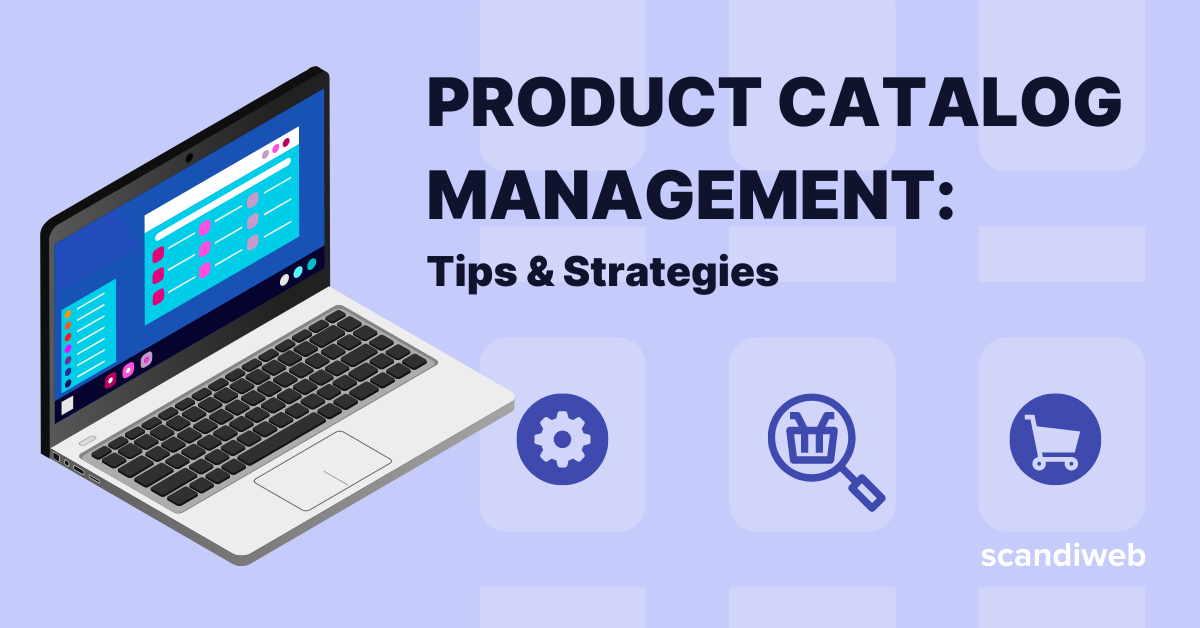Effective product catalog management is the backbone of a thriving online business, helping to enable seamless customer experiences and drive sales. Dive into this comprehensive guide to discover the essentials of product catalog management, key components, optimization strategies, and best practices for choosing the right product feed management tool and integrating it with other eCommerce systems.
Summary
- Maximize catalog management for eCommerce success with the help of specialized tools, enhanced categorization and tagging, personalization strategies, and integrated systems.
- Evaluate needs to choose the right tool from a variety of software options.
- Streamline data flow & processes while enhancing user experience to maximize sales potential.
The essentials of product catalog management
eCommerce product catalog management is at the core of a successful business, providing the structure and organization needed to maintain product information and customer satisfaction. With a well-managed product catalog, businesses can streamline inventory management, optimize product descriptions, and create a unified experience across multiple channels, ensuring a robust foundation for growth.
However, managing product pages and catalogs can be time-consuming and complicated, especially when dealing with extensive product lines and several sales channels. By leveraging catalog management software and following best practices, businesses can keep their online catalogs up-to-date, efficiently manage product pages, and enhance the overall customer shopping experience.
What is product catalog management?
Product catalog management is the process of organizing, standardizing, and maintaining product information for eCom businesses to ensure a seamless online shopping experience. This involves managing product data, digital catalogs, and assets across various sales channels, all while maintaining data quality and accuracy. A well-implemented product catalog managing system can significantly improve an online store’s efficiency and customer satisfaction.
Tools such as Product Information Management (PIM) systems are often used to streamline product catalog data management. PIM systems help businesses maintain a centralized database of product information, accessible online from multiple systems and devices, ensuring a consistent and accurate online catalog for customers shopping on web browsers or mobile apps.
The importance of product catalog management in eCommerce
Effective product catalog management is crucial for eCommerce businesses, ensuring accurate product data, optimized inventory management, and an enhanced customer experience. Standardizing product information across all sales channels is essential for providing a unified experience, reducing the likelihood of inventory mismanagement, and increasing product sales.
A well-managed product catalog can also boost customer trust and loyalty by providing accurate and up-to-date product descriptions, ensuring that customers are well-informed before making a purchase. Also, proper product categorization and tagging can improve search functionality and more effective product recommendations.
Key components of effective eCommerce catalog management
Successfully managing an eCommerce catalog requires a strong focus on product details and maintaining data quality and accuracy across different channels. As a business grows and expands, it becomes increasingly important to have a robust system in place to manage product catalogs across different platforms and with different sales channels.
By addressing these key components, businesses can ensure a seamless customer experience, optimize inventory data, and reduce the risk of errors that could negatively impact sales and customer loyalty.
Product details and digital assets
Managing product details and digital assets is an essential part of catalog management. This involves maintaining accurate and comprehensive product information, such as images, descriptions, and other assets, to provide customers with a complete understanding of each product.
Using tools like PIM systems can help businesses streamline their product data management, reducing errors and inconsistencies in their product catalogs. This leads to a more efficient management and ordering process and ensures an improved shopping experience for customers.
Multiple sales channels integration
Integrating product information across all channels, including your online store, is essential for effective catalog actual inventory management. This ensures a consistent user journey, regardless of the platform or sales channel used. Services like ShipBob, a fulfillment service provider, can help eCommerce businesses monitor inventory across all channels and manage their inventory more effectively.
Implementing a product tagging system in online stores can also improve inventory management and allow customers to quickly locate and browse accurately tagged items.
Data quality and accuracy
Maintaining data quality and accuracy is essential for successful catalog management. Accurate data about products ensures that customers have the correct information when making purchasing decisions, while data consistency across multiple channels helps maintain customer trust.
Regularly updating product detail information and inventory data is crucial for maintaining data quality and accuracy. Real-time data updates can help businesses stay on top of any changes in product availability or attributes throughout, ensuring that customers always have the most up-to-date information.
Strategies for optimizing product catalog management
Optimizing product catalog management involves implementing strategies that streamline data entry and management and enhance product categorization and tagging. By focusing on these areas, businesses can create a more efficient and effective process, ultimately leading to increased sales and customer satisfaction.
Adopting these optimization strategies can help businesses stay ahead of the competition, adapt to changing market conditions, and ensure that their product catalogs remain a crucial element in their supply chain and overall eCommerce success.
Streamlining product data management
Streamlining product data management can be achieved using tools and processes to efficiently manage and update product information. This can help businesses save time and resources by eliminating errors and inconsistencies and ensuring that their product catalogs are always up-to-date and accurate.
Additionally, as mentioned above, using systems like PIM can make it easier for businesses to maintain and update product information across multiple channels and platforms.
Enhancing product categorization and tagging
Improving product categorization and tagging can significantly enhance the customer shopping experience. By accurately categorizing and tagging products, customers shopping online can quickly and easily locate and browse the items they are interested in, leading to increased engagement and sales.
Implementing a well-organized tagging system can also improve backend operations, such as inventory management and sales tracking. This helps businesses better understand customer behavior and preferences, allowing them to make more informed decisions about product offerings and marketing strategies.
Personalizing the customer experience
Customizing product catalogs and recommendations based on individual customer preferences and behavior can help businesses create a more engaging and relevant shopping experience and lead to increased customer satisfaction and sales. Businesses can foster customer retention by tailoring product information and offers to meet each customer’s unique needs, ultimately driving repeat purchases and long-term business growth.
Choosing the right catalog management tool
When selecting a catalog management tool, consider business size, product catalog complexity, future expansion plans, the existing tech stack, and available labor resources.
By carefully evaluating these factors and exploring popular catalog management software options, businesses can find the ideal tool to streamline their catalog management processes and improve overall efficiency. Here are examples of the top PIM solutions on the market!
Pimcore

Pimcore, a top-notch Open Source digital platform, excels at uniting, enhancing, and governing business data. This platform stands out by delivering timely, bespoke customer experiences. Its seamless integration makes it a one-stop solution for crucial needs like PIM, MDM (Master Data Management), and DAM (Digital Asset Management).
Additionally, it serves as a comprehensive Customer Data Platform (CDP), a versatile Digital Experience Platform/Content Management System (DXP/CMS), and a robust digital commerce tool, making it an essential asset for businesses aiming for digital transformation.
Also read:
- Pimcore PIM and eCommerce Framework Power Online Vehicle Sales Microservice Platform
- Case Study: Unifying Product Information with Pimcore PIM
Akeneo PIM

Leveraging the Akeneo PIM system, businesses are empowered to efficiently manage, centralize, and harmonize their product data. Akeneo PIM plays a pivotal role in gathering, organizing, enhancing, and sharing product information seamlessly across various sales platforms.
As a unifying platform for product data, Akeneo PIM proves invaluable for businesses handling an extensive range of products or operating on numerous platforms. Its utilization can significantly improve product description precision, minimize channel discrepancies, and expedite the product-to-market process.
Also read:
- Case Study: Seamless Synchronization and Custom Solutions with Akeneo PIM
- Content First Approach with Akeneo
- Akeneo Crash Course (4 parts)
- Akeneo PIM + Magento 2: Reasons, Benefits, Integration
inRiver PIM

inRiver PIM is designed to provide a central place where all of a company’s product information can be collected, managed, and enriched before it is sent to various marketing channels like an eCommerce website, print catalog, ERP system, or a point-of-sale system.
InRiver PIM helps companies ensure that their product information is accurate, consistent, and up-to-date across all their sales and marketing channels.
Also read:
Plytix PIM

Plytix PIM is a cloud-based platform that helps businesses manage and distribute product content more effectively. It offers a centralized location for storing all product-related data, such as descriptions, specifications, images, and videos.
This platform allows companies to ensure the consistency and accuracy of their product information across multiple channels and platforms.
Factors to consider
When choosing a catalog management tool, businesses should consider the existing data tech stack, company size, product catalog complexity, and future expansion plans. Assessing the current tech stack involves evaluating usability, scalability, integration with other systems, and features like data ingestion, discovery, search, metadata management, templates, data lineage, and data quality monitoring.
Additionally, evaluating the size of a business and the complexity of its product catalog can help businesses determine the appropriate catalog management tool to meet their specific needs.
Popular catalog management software options
Popular catalog management software options include cloud-based, on-premise, open-source, and SaaS solutions, each with its advantages and drawbacks. Cloud-based systems offer flexibility and accessibility from any device with an internet connection, while on-premise solutions require additional resources, IT infrastructure, and implementation time.
Open-source catalog management solutions provide cost-effective and customizable options, although they may require more technical expertise to manage effectively. By considering these options, businesses can choose the right catalog management solution to meet their unique needs and requirements.
Integrating catalog management with other eCommerce systems
Streamlining data flow and processes
Integrating and connecting catalog management with PIM, ERP, and warehouse management systems can help streamline data flow and processes, improving efficiency and reducing errors. By maintaining accurate and consistent product information across multiple systems, businesses can ensure that customers always have access to the most up-to-date product data, regardless of the platform or channel they are using.
This streamlined data flow helps businesses better manage their inventory levels and sales tracking, leading to more informed decision-making and overall business growth, positively impacting average order value.
Enhancing customer experience
By integrating catalog management with customer-facing systems, such as eCommerce platforms and personalization tools, businesses can enhance the overall customer experience, increasing satisfaction and sales. Customizing product catalogs and recommendations based on individual customer preferences and behavior can create a more engaging and relevant shopping experience, fostering customer loyalty and trust.
Furthermore, integrating catalog management with conversational commerce through virtual assistants can foster customer intimacy and transform feature-based product information into intention-based experiences, offering novel customer interactions and driving sales.
Summary
In conclusion, effective product catalog management is essential for eCommerce success, involving the organization and optimization of product information to improve sales and customer experience. Businesses can streamline their catalog management processes by focusing on key components, implementing optimization strategies, choosing the right catalog management tool, and integrating with other eCommerce systems and drive growth in today’s competitive eCommerce landscape.
Frequently Asked Questions
What is the catalog management role?
Catalog management involves maintaining up-to-date product information across all online sales channels, ensuring accuracy and data integrity. It also entails managing copyright, royalties, and licensing, as well as analyzing sales data and making recommendations for catalog promotion under the Licensing and Sync department.
What is catalog management on Amazon?
Catalog management on Amazon is an essential tool for businesses to increase sales by optimizing the presentation of their products in Amazon’s system. Product data must be managed accurately and consistently within the catalog to be effective.
Amazon provides a range of tools to help users manage their product catalogs.
What is content and catalog management?
Content and catalog management is the process of creating, managing, and optimizing digital content and catalogs for optimal customer experience. It helps ensure potential customers can easily find the products they’re looking for and understand their features, benefits, and price points.
Additionally, it helps ensure that content is accurate and up-to-date.
What is the role of a catalog manager in eCommerce?
As a catalog manager in eCommerce, you are responsible for organizing and maintaining the product offerings available. This includes setting prices, managing inventory levels, creating product descriptions, and updating existing information.
By ensuring accurate and up-to-date data is available, you play an important role in the success of any online business.
What is catalog management software?
Catalog management software is an effective eCommerce tool online businesses use to organize and manage their product catalogs. It allows them to create and update product descriptions, track inventory levels, and establish prices quickly and easily.
This software helps businesses streamline their operations and increase efficiency. It also helps them keep their product catalogs up to date and ensure customers have access to the latest information.
Are you interested in setting up product catalog management software? scandiweb has a team of certified experts that can take on any project. Besides, we’re official Pimcore and Akeneo partners! Contact us today, and we will provide a strategy best suited for your business!


Share on: